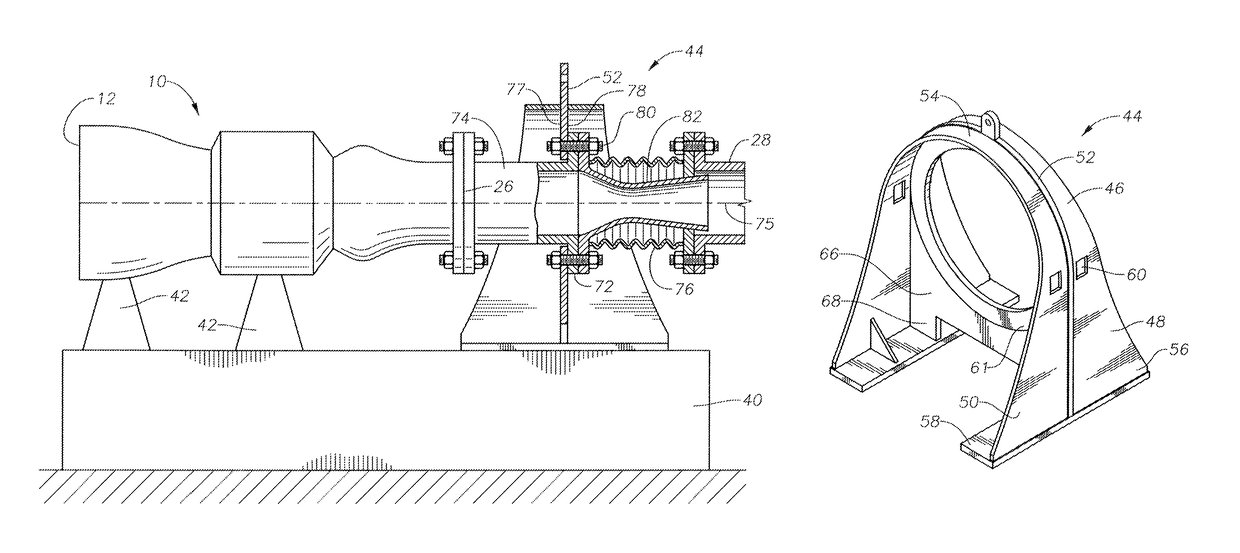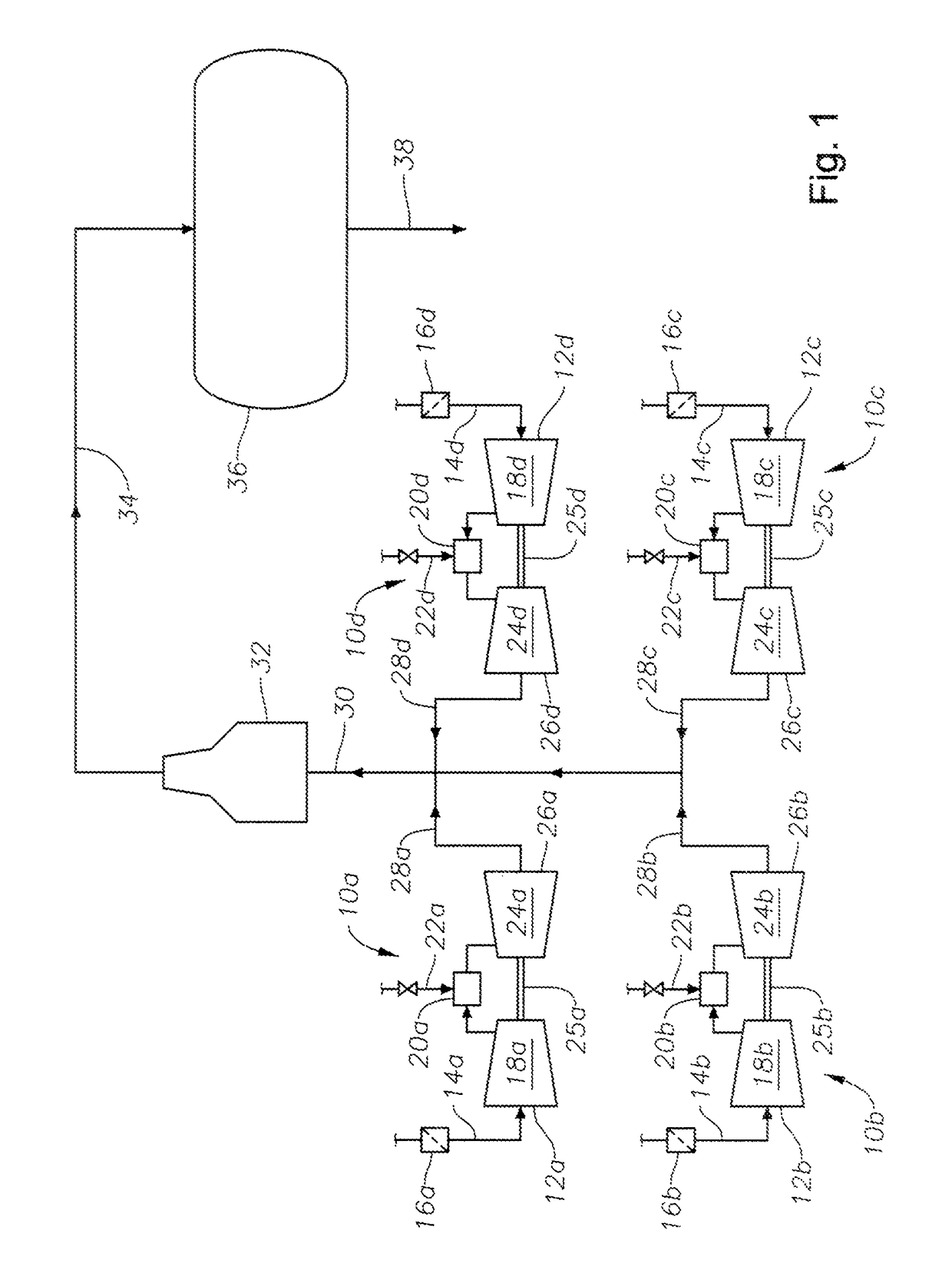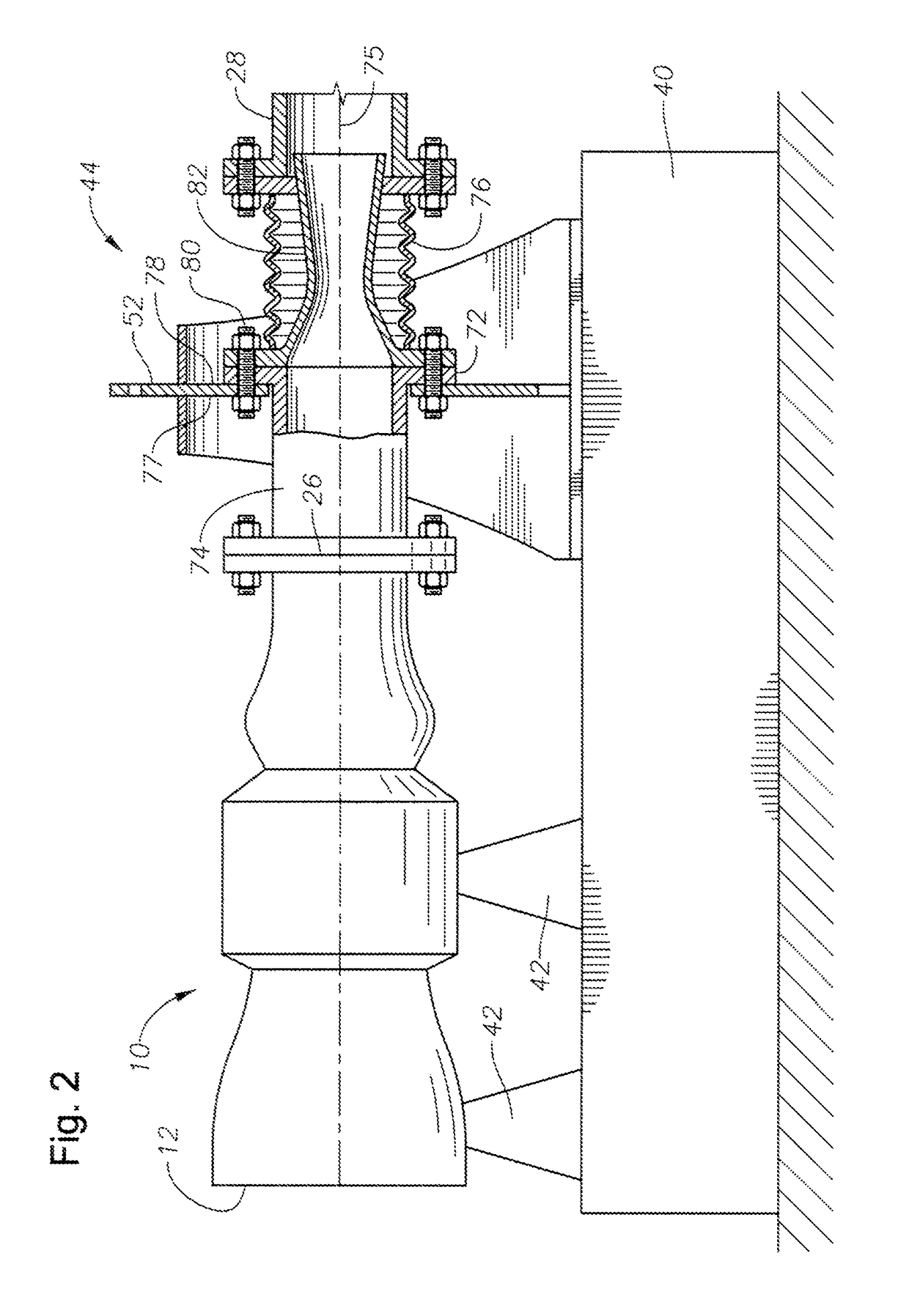Method and apparatus for supplying heated, pressurized air
a technology of pressurized air and heating method, which is applied in the direction of water supply installation, machine/engine, pipe heating/cooling, etc., can solve the problems of increasing the process step, inefficient methods, and inability to allow a gas turbine or aero-derivative gas turbine engine to provide all of the heated, pressurized air, etc., to achieve the effect of reducing the role of any downstream heater, maximizing reliability and reducing energy requirements
- Summary
- Abstract
- Description
- Claims
- Application Information
AI Technical Summary
Benefits of technology
Problems solved by technology
Method used
Image
Examples
example
[0046]This example provides information relating to an industrial process with which an embodiment of the current application can be used. Although the following description of the example includes the reference numbers from FIG. 1, it is to be understood that that the example is also applicable to other embodiments as well. In the example, the industrial process requires air to reach the process device 36 with the following parameters:
Temperature: 1200 to 1250 deg F.
Pressure: 10 to 15 psig
Flow Rate: 2,000,000 to 2,500,000 lbs per hour
[0047]In order for air to arrive at the process device 36 meeting those parameters, and taking losses into account, the exhaust gases from the engines 10a, 10b, 10e, 10d are designed to have the following output parameters:
Temperature: 1180 to 1230 deg F.
Pressure: 25 to 35 psig
Flow Rate: 2,000,000 to 2,500,000 lbs per hour
[0048]If four carefully selected engines 10a, 10b, 10c, 10d were used for this application, the temperature, pressure, and flow para...
PUM
 Login to View More
Login to View More Abstract
Description
Claims
Application Information
 Login to View More
Login to View More - R&D
- Intellectual Property
- Life Sciences
- Materials
- Tech Scout
- Unparalleled Data Quality
- Higher Quality Content
- 60% Fewer Hallucinations
Browse by: Latest US Patents, China's latest patents, Technical Efficacy Thesaurus, Application Domain, Technology Topic, Popular Technical Reports.
© 2025 PatSnap. All rights reserved.Legal|Privacy policy|Modern Slavery Act Transparency Statement|Sitemap|About US| Contact US: help@patsnap.com



